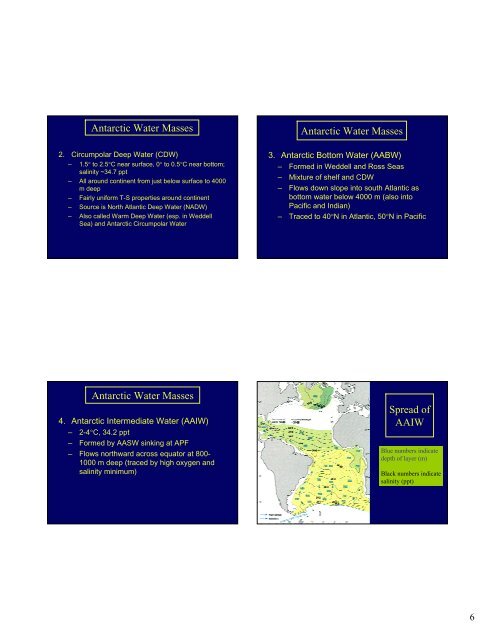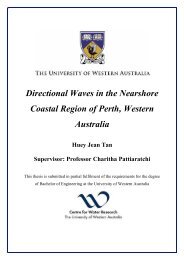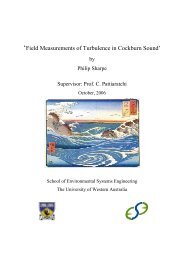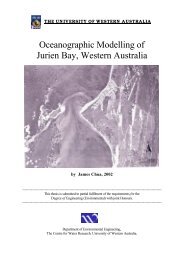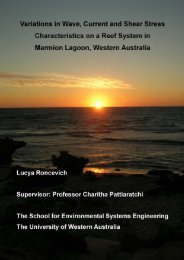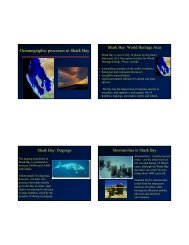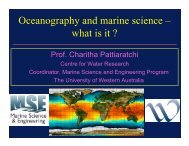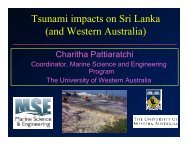Antarctic Oceanography
Antarctic Oceanography
Antarctic Oceanography
You also want an ePaper? Increase the reach of your titles
YUMPU automatically turns print PDFs into web optimized ePapers that Google loves.
<strong>Antarctic</strong> Water Masses<br />
2. Circumpolar Deep Water (CDW)<br />
– 1.5° to 2.5°C near surface, 0° to 0.5°C near bottom;<br />
salinity ~34.7 ppt<br />
– All around continent from just below surface to 4000<br />
m deep<br />
– Fairly uniform T-S properties around continent<br />
– Source is North Atlantic Deep Water (NADW)<br />
– Also called Warm Deep Water (esp. in Weddell<br />
Sea) and <strong>Antarctic</strong> Circumpolar Water<br />
<strong>Antarctic</strong> Water Masses<br />
3. <strong>Antarctic</strong> Bottom Water (AABW)<br />
– Formed in Weddell and Ross Seas<br />
– Mixture of shelf and CDW<br />
– Flows down slope into south Atlantic as<br />
bottom water below 4000 m (also into<br />
Pacific and Indian)<br />
– Traced to 40°N in Atlantic, 50°N in Pacific<br />
<strong>Antarctic</strong> Water Masses<br />
4. <strong>Antarctic</strong> Intermediate Water (AAIW)<br />
– 2-4°C, 34.2 ppt<br />
– Formed by AASW sinking at APF<br />
– Flows northward across equator at 800-<br />
1000 m deep (traced by high oxygen and<br />
salinity minimum)<br />
Spread of<br />
AAIW<br />
Blue numbers indicate<br />
depth of layer (m)<br />
Black numbers indicate<br />
salinity (ppt)<br />
6


